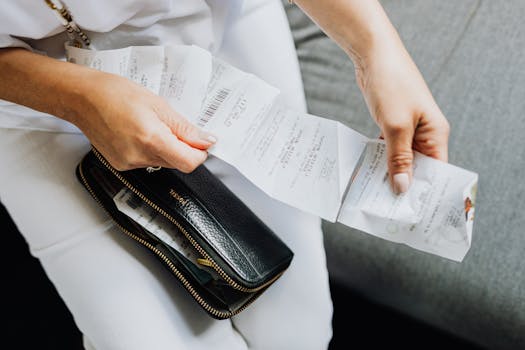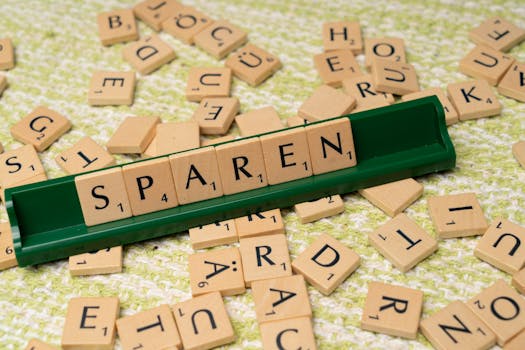Personal finance
How to Pay Off Debt Faster Without Extra Income
Break free from debt without earning more by streamlining spending, using smart payoff strategies, reducing fees, and automating payments. Learn step-by-step approaches so every dollar helps you win this month.
Advertisement
Wrestling monthly bills can feel like a tug-of-war where debt always seems to gain ground. Finding ways to pay off debt feels urgent, but extra income isn’t always an option.
Millions face the challenge of reducing balances on credit cards, student loans, or medical bills. What happens when paychecks stay the same, but you want to break free from debt?
This guide explores practical, realistic steps to pay off debt faster—even if a bigger paycheck isn’t on the horizon. Let’s dig in and start building momentum.
Streamline Spending to Boost Debt Payments Right Now
A direct way to pay off debt faster is by diverting wasted spending toward your balances. The goal is to make room in your budget for bigger payments, right where you are.
Breaking routines takes intention, not perfection. Catching small leaks in your spending builds confidence each time you redirect dollars toward lowering debt.
Spot Unnecessary Expenses in Your Weekly Routine
Sit down with your last month of bank statements and highlight every transaction by category. You’ll notice recurring outflows for things you forgot about or barely use—like unused subscriptions, delivery fees, or café snacks.
Run a simple test: If you don’t remember using it last week, put it on your cancel or pause list. People rarely miss streaming services or apps after the first week, and some find cutting them surprisingly freeing.
After canceling, write down the monthly total you’ve reclaimed. Apply every cent to your next debt payment and mark your calendar to check your progress in 30 days.
Automate Savings on Essentials to Free Up More Cash
Next, review essentials—groceries, utilities, fuel—for hidden savings. Change your grocery routine by starting a weekly list and sticking to it, leaving impulse buys at home. Compare store-brand items for common purchases.
For utilities, call your provider and say, “I’m reviewing my budget, so I need to ensure I’m on your best plan.” Sometimes a brief conversation drops bills without affecting services.
Track each successful tweak in a shared notebook or app. Seeing the actual saved dollars will keep you motivated to keep whittling down debt—one simple habit at a time.
| Spending Category | Actionable Change | Expected Monthly Savings | Next Step |
|---|---|---|---|
| Streaming Services | Cancel 1–2 unused subscriptions | $15–$30 | Apply savings to smallest debt |
| Groceries | Stick to a weekly list, buy store brands | $40–$60 | Transfer difference to debt payment |
| Utilities | Negotiate or switch providers | $20–$40 | Re-route savings toward loans |
| Transportation | Carpool or use public transit weekly | $10–$25 | Automate extra payment for debt |
| Dining Out | Limit meals out to 1x/week | $50–$100 | Commit extra saved to monthly debt |
Prioritize Debts for Impact Using Strategic Payment Methods
Choosing which debts to tackle first creates visible progress and keeps motivation high. Paying off debt with a targeted method gives every dollar a job and reduces overwhelm.
Approach this as a personal strategy game: you’re deploying resources where they deliver the fastest progress and satisfaction. Each step brings that debt-free goal closer.
Select a Focus Debt with the “Quick Win” Rule
Organize your bills by outstanding balance and interest rates. Target the lowest-balance account for fast wins, or choose the highest-interest one if it’s costing you the most in added charges.
Bigger psychological boosts come from eliminating an account entirely, while higher savings come from attacking nastier interest rates. Either way, pay the minimum on all other debts and throw every spare dollar at your chosen account.
- List balances and rates for every debt to gain clarity and spot your target.
- Commit all budgeted savings to this single focus account—track how quickly the balance shrinks.
- Celebrate every milestone, from the first $100 knocked off to a completely paid balance.
- Try using color-coded charts or sticky notes for progress—visible results spur motivation.
- Once a debt is gone, roll that same payment onto your next focus target without delay.
Momentum builds fast as accounts disappear, helping you pay off debt with increasing confidence and certainty.
Apply Debt Avalanche Tactics for Long-Term Savings
Paying off debt using the avalanche method means focusing all extra payments on the highest-interest account first, regardless of balance. This approach reduces the total interest you pay over time.
Though results may take longer to surface than the “snowball” method, this approach saves the most money in the long run. Write down the current interest cost each month to see your future savings pile up.
- Gather every debt’s balance, monthly payment, and interest rate for a side-by-side view.
- Order debts by interest, highest to lowest, to see exactly where your dollars work hardest.
- Make minimum payments on lower-priority debts to avoid penalties, but direct all savings to the top account.
- Monitor interest amounts with each payment—you’ll begin to notice the monthly cost shrinking.
- When one is gone, shift those dollars down the list to the next-highest-rate balance, repeating.
If numbers keep you motivated, the avalanche method turns every extra cent into measurable progress over the coming months.
Automate Your Debt-Free Momentum So You Stay Consistent
Systems—not willpower—keep the process moving even on tough days. Automatic payments and reminders guarantee you stick with your plan to pay off debt, no matter what’s happening in your week.
Set Up Automatic Transfers Right After Payday
Schedule your debt payments to process the morning after your paycheck lands. This way, you never give yourself an excuse to skip or spend the money elsewhere.
It’s the “pay yourself first” principle—except here, you’re shrinking your debt before it ever tempts you to spend. People who automate payments report less anxiety and more control.
If you find an extra $20 this week, add a one-time payment immediately. Set a calendar note on your phone and make celebrating each step part of your routine.
Use Visual Habit Cues to Stay on Track Without Effort
Build a ritual around each debt payment: Light a candle before logging in, use a specific pen for tracking, or reward yourself with free time right after you click “pay.”
Put a calendar reminder or sticky note near your workspace. This visual prompt nudges you to check progress or transfer extra dollars when you have a surplus.
Attach this cue to an existing routine, like Saturday morning coffee or Sunday evening review. The habit sticks better, and your focus on paying off debt grows stronger week by week.
Cut Down Interest and Fees Without Paying More Each Month
You can pay off debt faster by shrinking the slice that goes to interest and late fees—even if the total monthly payment doesn’t change. A few well-timed tweaks make a big impact.
Think of this like patching holes in a bucket; less water (money) leaks out to unnecessary costs, so you fill the debt faster and with less frustration or lost progress.
Ask Lenders for Lower Rates or Fee Waivers Immediately
Call your credit card or loan provider and say, “I’ve been a reliable customer, and I need a rate reduction while focusing on repayment.” Even a 2% drop can mean hundreds in annual savings.
Have a list of recent on-time payments and your account number ready. Calmly state your case, and don’t be afraid to mention you’re comparing offers from other providers.
If denied, ask if they have any hardship or loyalty programs that offer fee waivers or temporary lower rates while you pay off debt more aggressively.
Consolidate Accounts for Simpler, Cheaper Payments
Transfer high-interest balances to a lower-interest card or a personal loan. Calculate up-front whether fees cancel out the benefit, using the table below as a quick check.
Combining payments turns multiple due dates into one, lowers stress, and frequently means more of every dollar goes toward principal instead of interest.
If you consolidate, don’t use the newly cleared cards for spending. Cut yourself a celebratory card confetti (literally cut them up) and focus every payment on your reduced total.
Stay Empowered and Persistent on Your Debt-Free Journey
The journey to pay off debt without extra income demands small, consistent actions—each one stacking on the last. Progress may feel slow, but every adjustment brings you closer to financial freedom.
Your efforts matter far beyond a zero balance. They prove your ability to take control, face limitations head-on, and build a foundation for wiser financial choices in every season that follows.
Stay patient and celebrate each win, from a waived fee to a canceled subscription. Your commitment today plants seeds for a debt-free tomorrow—one payment, one milestone at a time.





